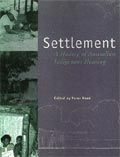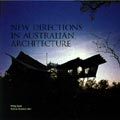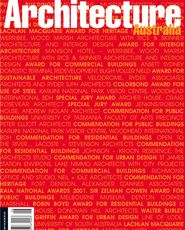Settlement: A History Of Australian Indigenous Housing

Edited by Peter Read. Aboriginal Studies Press, $33.
This publication is a significant contribution to the small handful of existing collective examinations of the destabilising consequences of social engineering practices – as realised through spatial enclosure, built form and social welfare policy. Its notable forerunner is Heppell’s 1979 edited collection A Black Reality: Aboriginal Camps and Housing in Remote Australia. This new book does not claim to be the definitive word on the subject and there are still many books to be written.
The book is organised into five parts. In order to comprehend the gravity of the contributions in the later sections I would suggest that the reader first tackles Paul Memmott’s “The Way It Was: Customary Camps and Houses in the Southern Gulf of Carpentaria” – a part-historical narrative, woven between less evocative technical descriptions, that animates precontact lifestyle, and its repertoire of shelter types.
Part II, the sparsely illustrated Settlements of Enclosure, examines the agents of the state, of private enterprise, and of religious institutions, who controlled peoples’ lives within prescribed models of productivity.
Compare the similarities of building types and resocialising programs of the mission settlement outlined in Bain Attwood’s “Space and Time at Ramahyuck” and Samantha Wells’s “Labour, Control and Protection: The Kahlin Aboriginal Compound Enclosure of Darwin”. Tim Rowse presents another faceted view in “Housing and Colonial Patronage”, which highlights the internal contradictions between assimilationist ideology and its application in Alice Springs.
The title of Part III, Settlement and Government, is misleading in that it conveys the impression of an absence of government in previous eras. It attempts to capture the 1970s period when the Commonwealth started to fund housing. Programs remained overtly assimilationist, wrapped in a new rhetoric of equality and self-determination (see Penny Tripcony’s “Towards Aboriginal Management of Aboriginal Rental Housing”).
Commonwealth grants to Aboriginal associations began as a flawed model.
Programs were under-funded and culturally restrictive, with policies favouring the nuclear family model against the cultural preference for extended kin groups. For example, alternative household types, in particular gender-specific housing, were not executed as an officially sanctioned building type at Yuendumu until 1995-1996, as recounted by Cathy Keys in “The House and the Yupukarra”. Kay Anderson’s “Savagery and Urbanity: Struggles over Aboriginal Housing, Redfern, 1970-1973” illustrates the South Sydney Council’s refusal, as defender of “the culture of the settler self”, to be co-opted to practise the Federal policy of equality.
Part IV, Unsettlement, is described by Read as “a disturbing but constructive challenge to those settled”. Many will be unfamiliar with richly illustrated examples of work by ethno-architects provided in Stephanie Smith’s “Tin Camps: Selfconstructed Housing – Goodooga”. “Housing for Health”, by Paul Pholeros, Paul Torzillo and Stephan Rainow, dissects the lethal presumption that houses improve the health outcomes of remote communities.
Settlement is the first publication to include a significant contribution from architectural authors. Architects have sporadically contributed to the existing body of written work, but they have mostly been prominent in their silence on a discussion led by other professionals. Paul Haar’s contribution, “A Self-help Approach to Remote Area Housing”, asks poignant questions of the architectural profession in this regard. Hopefully the status quo may change, but another millennium has arrived and the architectural profession is still averting its eyes elsewhere.
Carroll Go-Sam
New Directions In Australian Architecture

Philip Goad and Patrick Bingham-Hall. Pesaro Press, $69.95.
This is the result of collaboration between critic Philip Goad and photographer/ publisher Patrick Bingham-Hall. It sets out to illustrate the diversity of Australian architectural directions over the past decade and in doing so to challenge international expectations of what might constitute an Australian architecture.
Philip Goad’s essay introduces the book and describes a series of conceptual strands that generate a framework of interlacing ideas through which we are to understand this diversity. Cutting across this framework are ten “partial views” or themes, which result, Goad claims, from the archipelago nature of Australian architectural culture.
Goad’s fifty-nine page illustrated essay is followed by a further two hundred and thirtyfive pages of seductive (sometimes gorgeous) images in a mix of colour and black-and-white. The images are literal and avoid abstraction. They constitute a photographic catalogue of the work of fourteen contemporary Australian practices referred to in Goad’s essay. The images are supported by informative project and biographical descriptions and by tiny (but useful) plans, sections and elevations.
This book is a hybrid negotiating the ground between critical text and coffee table ornament. It will be popular with (and useful for) professionals, students, and enthusiasts.
There is a contradiction, however, between the book’s critical frame and selective content. The title, the framework of critical strands and the geographical coverage of the text suggest a comprehensive coverage of new directions.
The emphasis on Melbourne architecture (half of the fourteen architects selected) is at the expense of other important new directions. Tasmanian work for example, is not covered (other than by footnote), despite national and international publication of work from that state during the past few years.
These missing pieces are needed to satisfactorily achieve the book’s comprehensive ambition. Perhaps there is an opportunity for expanded future editions or supplementary publications.
These omissions, and the book’s Melbourne-centred selection of works, do not, however, make it less useful in its evaluation and publication of what is a collection of undoubtedly important Australian works. Between them, the selected architects have produced exciting recent works and their projects look fabulous in print.
Richard Blythe















